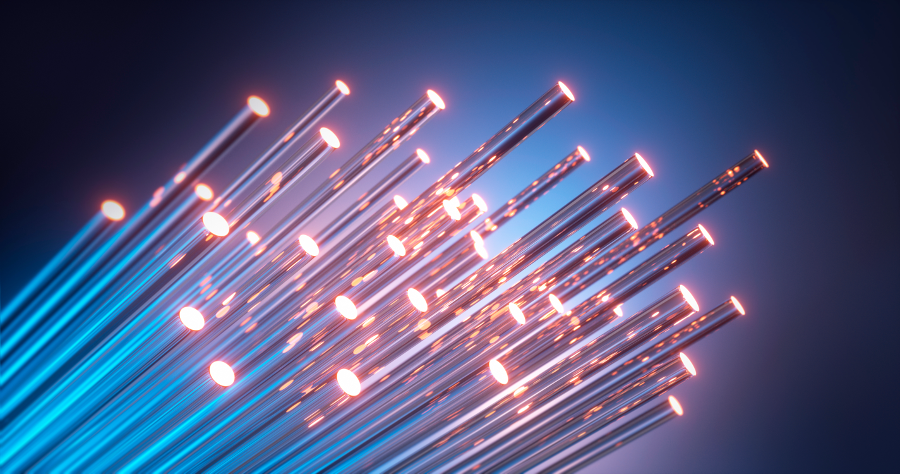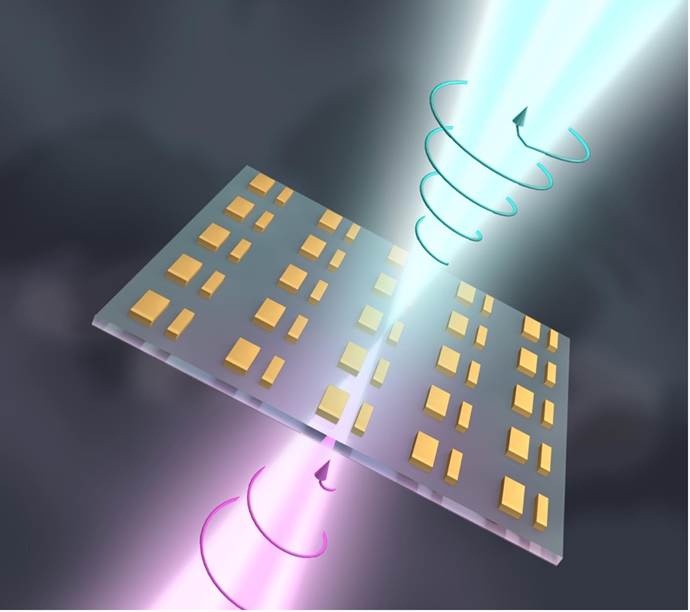Twisted light to transform the future of technology
By: Phillis Zeng
Posted on

A set of modern devices. Image: Pixel-Shot / Adobe Stock
From smartphones to laptops, our devices are called ‘electronics’ because they use electrons to carry information.
But electrons may not be the future of technology.
Dr Kirill Koshelev from the Research School of Physics at The Australian National University (ANU), is exploring a revolutionary approach that uses photons instead of electrons—with a twist.
By introducing ‘chirality’—spiral-like structures similar to how your left and right hands mirror each other—into nanostructures, his team aims to create entirely new ways for devices to process and store information.
“With devices becoming smaller, we need chips that are more efficient in storing and processing data,” he says.
“However, as our demand for faster and more powerful technologies grows, conventional electronics are reaching their limits.”
To Koshelev, there is one solution: replacing electrons with photons—the fundamental particles of light.
“The key benefit of photons is that they travel at the speed of light, which is far faster than electrons,” he says.
“This means quicker data processing and transmission speeds.
“It’s also more energy-efficient because light signals generate much less heat than electrical signals.”
This approach builds on the growing field of photonics, which has been gaining momentum since the 1970s when fibre-optic data transmission reshaped telecommunication.
Today, photonics plays a significant role in laser manufacturing, biological and chemical sensing, medical diagnostics and therapy, and optical computing.

3D illustration of fibre-optic cables. Image: peterschreiber.media / Adobe Stock
One of the obstacles to commercialising photonic technology for daily use is the size, as photonic devices tend to be larger than their electronic counterparts and shrinking them down remains a challenge.
To solve this problem, Koshelev has been working on fundamental physical concepts that will inform new ways to store and transfer light within tiny areas, known as nanostructures, that are up to 5000 times smaller than the width of a strand of hair.
“During my PhD, I explored how to store and manipulate light in a nanostructure using a physical phenomenon called resonance,” Koshelev says.
“It’s similar to how microwave ovens use light waves that reflect off the metal interior to form a strong wave that can heat food.
“My team and I found the specific sizes and shapes that allow the nanostructures to store light efficiently and created record-breaking photonic devices.”
This achievement earned Koshelev a place on Clarivate’s Highly Cited Researchers list in 2024—a rare honour, particularly for an early-career researcher.

Dr Koshelev presenting an invited talk at an international workshop on nanophotonics in Qingdao, China. Image: Qingdao Innovation and Development Base
Now, supported by the Australian Research Council (ARC)’s Discovery Early Career Researcher Award (DECRA), Koshelev is taking his research further by adding a “twist”, literally, to the nanostructure—a property known as chirality.
“In simple terms, chirality means a twisted shape like a spiral,” he says.
“Chiral objects always appear as a pair, but the left-handed and right-handed parts can be very different in their physical and chemical properties.”
By introducing chirality, Koshelev and his team aim to invent nanostructures with twists in their interior shapes.
Light can also have chirality due to a property called polarisation, says Koshelev.
“We want to use the interaction between a circularly polarised light wave and a chiral nanostructure to control light, selectively allowing certain light signals that carry information to pass through and be processed.
“The chiral structures will also offer a natural system for encoding digital data, making information storage and retrieval easier and more efficient.”

Schematic of a nanostructured surface for control of light polarization and chirality. Image: Anastasia Shalaeva / ITMO University
Koshelev will draw on his expertise in mathematical analysis to generate new fundamental knowledge that pushes optical chirality beyond its natural limits.
He is also looking to collaborate with international scientists to test and refine his theory, aiming to produce a highly efficient photonic nanomaterial.
“This anticipated novel material will have extensive applications—from faster telecommunications and powerful optical computers to advanced sensors for disease detection—which could transform how we live, work and connect,” Koshelev says.
And those everyday electronics?
“In the future, we’ll call them photonics.”
You may also like
ANU research creates satellite maps for emergency help
First responders would be furnished with almost-instant satellite maps of the natural disasters they are tackling thanks to a new algorithm that Australian National University (ANU) researcher…
Democratic values in AI: ANU-led research seeks answers
Finding ways to safeguard human rights and democratic values when artificial intelligence (AI)-enabled products and systems increasingly operate without human intervention, is the focus of a new…
Farmers add space tech to their toolboxes
Australian primary producers may soon look to the skies with more than just an eye on the weather thanks to Australian National University (ANU) researchers who are helping farmers tap into rapidly…


